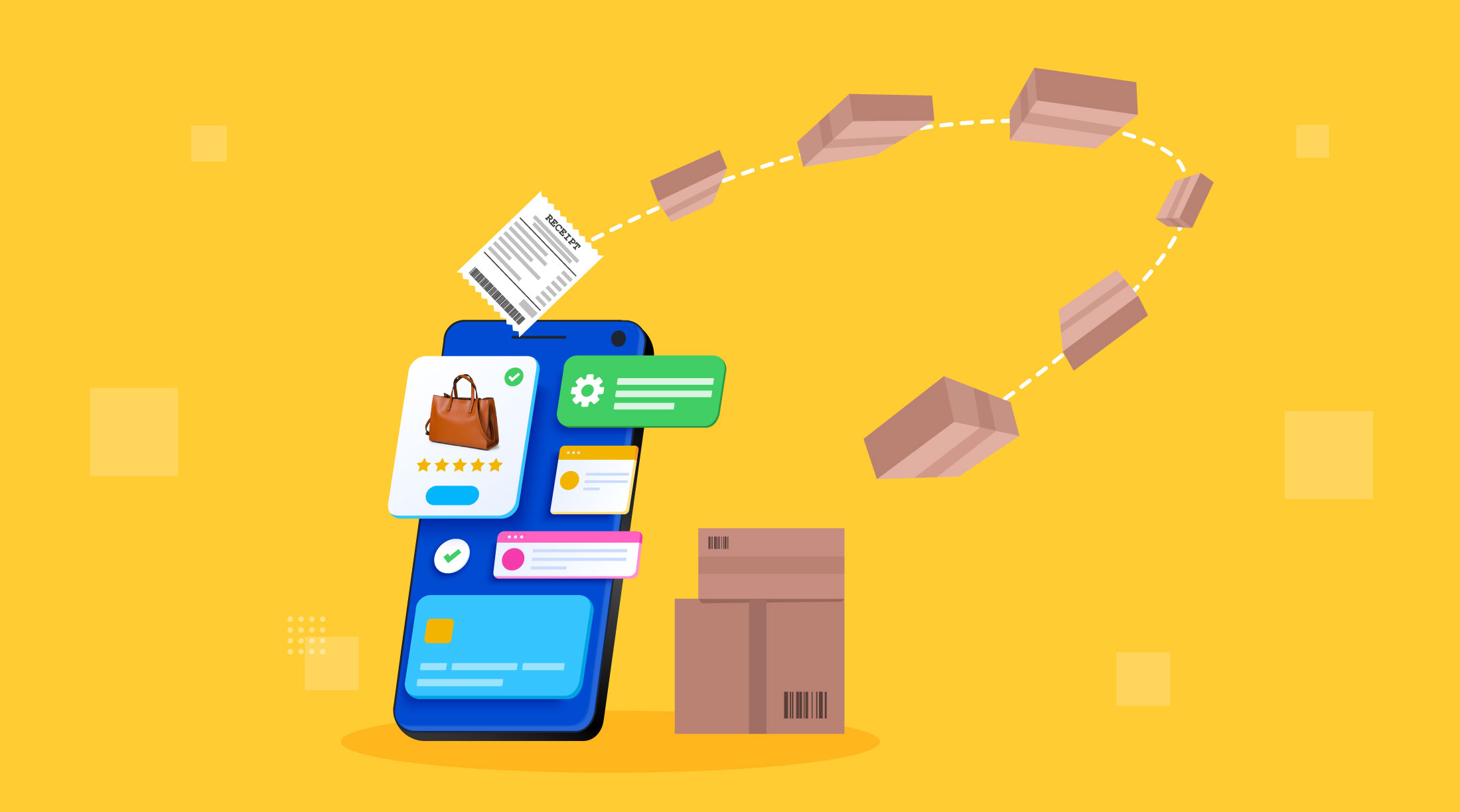
Empowering Online Success: Demystifying E-commerce Marketing and Driving Sales in the Digital Age
Have you ever wondered how online businesses manage to sell their products so effectively? The answer lies in ecommerce marketing. This rapidly growing field is changing the way businesses reach their customers and sell their products.
Ecommerce marketing is the practice of using digital strategies to promote and sell products online. It encompasses a wide range of tactics, from email marketing to social media advertising, and is crucial for any business looking to succeed in the online marketplace. In this blog, we’ll explore the basics of ecommerce marketing and how it can help your business thrive.
In recent years, e-commerce has experienced exponential growth, transforming the way businesses operate and connect with customers. The digital marketplace offers unprecedented opportunities for businesses of all sizes to expand their reach and drive sales. With the increasing reliance on online shopping, it is crucial to understand the great potential that e-commerce presents.
The Power of E-commerce Marketing: Unlocking Online Success for Businesses
E-commerce marketing plays a pivotal role in the success of online businesses. It encompasses a wide range of strategies and tactics aimed at promoting and selling products online. By leveraging effective e-commerce marketing techniques, businesses can establish a strong online presence, attract a targeted audience, and ultimately achieve sustainable growth in the digital age.
In this blog, we will explore what is e-commerce marketing and how it can help businesses thrive in the competitive online landscape.
Understanding E-commerce Marketing
E-commerce Marketing Defined: Strategies for Promoting and Selling Products Online
E-commerce marketing refers to the comprehensive set of strategies employed to promote and sell products in the online marketplace. It encompasses various digital channels, including search engine optimization (SEO), pay-per-click (PPC) advertising, social media marketing, and email marketing. By utilizing these strategies effectively, businesses can enhance their visibility, attract qualified leads, and convert them into loyal customers.
The Shift to Digital: How E-commerce Marketing Differs from Traditional Marketing
While there are similarities between e-commerce marketing and traditional marketing, understanding the key differences is crucial for success in the digital landscape. E-commerce marketing requires businesses to adapt to the unique characteristics of online platforms, such as personalized targeting, real-time analytics, and interactive customer engagement. By embracing these digital marketing nuances, businesses can effectively position themselves in the competitive e-commerce landscape.
Key Components of Successful E-commerce Marketing Campaigns
Building successful e-commerce marketing campaigns requires a comprehensive approach. Several key components contribute to their effectiveness. These include a deep understanding of the target audience, compelling product descriptions and visuals, seamless user experience (UX) design, and building trust through social proof and customer reviews. By adhering to these components in their campaigns, businesses can drive customer engagement, increase conversions, and achieve sustainable growth.
Building an Effective E-commerce Marketing Strategy
Defining Your Target Audience: Identifying and Understanding Your Ideal Customers
One of the fundamental steps in developing an effective e-commerce marketing strategy is defining the target audience. By identifying and understanding the characteristics, preferences, and behaviours of their ideal customers, businesses can tailor their marketing efforts to resonate with their target audience. This involves conducting market research, analyzing customer data, and creating buyer personas to guide marketing decisions.
Optimizing Your E-commerce Website: Creating a User-Friendly and Conversion-Driven Experience
A well-optimized e-commerce website is critical for driving sales and conversions. Businesses need to focus on creating a user-friendly and conversion-driven website design. This includes optimizing website navigation, ensuring mobile responsiveness, simplifying the checkout process, and incorporating persuasive call-to-action buttons. A seamless buttery user experience enhances customer satisfaction, encourages repeat purchases, and fosters brand loyalty.
Crafting Compelling Product Descriptions and Visuals: Engaging Customers and Driving Sales
Compelling product descriptions and visuals are essential for capturing customer attention and driving sales in the online marketplace. Businesses should focus on creating product descriptions that highlight the unique features, benefits, and value propositions of their products. Additionally, high-quality visuals, including images and videos, significantly impact customer engagement and decision-making.
By combining persuasive product descriptions with visually appealing content, businesses can effectively communicate the value of their products and motivate customers to make a purchase.
Driving Traffic to Your E-commerce Store
Search Engine Optimization (SEO) for E-commerce: Increasing Organic Visibility
Search engine optimization (SEO) is crucial to driving organic traffic to e-commerce websites. By optimizing website structure, content, and metadata, businesses can improve their search engine rankings and increase visibility in search results. Keyword research, on-page optimization, and link building are some of the key strategies involved in e-commerce SEO. By implementing effective SEO practices, businesses can enhance their online presence and attract qualified organic traffic.
Pay-Per-Click (PPC) Advertising: Maximizing Reach and Conversion with Targeted Campaigns
PPC advertising enables businesses to maximize their reach and drive immediate traffic to their e-commerce store. By creating targeted ad campaigns on platforms like Google Ads and social media platforms, businesses can reach their desired audience based on demographics, interests, and search intent. Effective keyword research, ad copywriting, and bid management are crucial for optimizing PPC campaigns and maximizing conversions.
Social Media Marketing for E-commerce: Leveraging Platforms to Reach and Engage Customers
Social media platforms provide businesses with powerful tools to reach and engage with their target audience. By leveraging social media marketing strategies, businesses can build brand awareness, foster customer engagement, and drive traffic to their e-commerce store. Effective social media content planning, community management, influencer partnerships, and social advertising are key tactics for successful e-commerce social media marketing.
Enhancing Customer Experience and Conversion Rate
User Experience (UX) Design: Creating Intuitive and Seamless Shopping Experiences
A seamless user experience is crucial for enhancing customer satisfaction and driving conversions. Businesses should optimise the user interface (UI) and user experience (UX) design of their e-commerce websites. This includes intuitive navigation, fast page loading speed, simplified checkout processes, and mobile responsiveness. By prioritizing UX design, businesses can provide a frictionless shopping experience and increase their conversion rates.
Personalization and Customer Segmentation: Tailoring Marketing Messages and Offers
Personalization and customer segmentation are effective strategies for engaging customers and driving conversions in e-commerce marketing. By leveraging customer data and segmentation techniques, businesses can deliver personalized marketing messages, offers, and recommendations to their target audience. This approach enhances customer satisfaction, increases engagement, and fosters brand loyalty.
Building Trust and Social Proof: Reviews, Testimonials, and Influencer Marketing
Building trust is essential for e-commerce success. Businesses can leverage social proof to establish credibility and encourage customer trust. This includes displaying customer reviews, testimonials, and ratings on product pages. Additionally, influencer marketing can be a powerful strategy for showcasing products, generating social proof, and reaching a wider audience. By incorporating trust-building elements into their marketing strategies, businesses can instil confidence in potential customers and drive conversions.
Measuring and Analyzing E-commerce Marketing Performance
Key Performance Indicators (KPIs) for E-commerce: Tracking Sales, Traffic, and Conversions
Measuring and analyzing the performance of e-commerce marketing efforts is vital for making data-driven decisions. Businesses should track key performance indicators (KPIs) such as website traffic, conversion rates, average order value, customer acquisition cost, and customer lifetime value. These metrics provide insights into the effectiveness of marketing campaigns and help businesses identify areas for improvement.
Conversion Rate Optimization (CRO): Improving Your Sales Funnel and Maximizing ROI
Conversion rate optimization (CRO) focuses on improving the efficiency of the sales funnel and maximizing return on investment (ROI). By conducting A/B testing, analyzing user behaviour, and making data-driven changes to the website and marketing campaigns, businesses can increase their conversion rates and maximize their revenue. CRO is an ongoing process that involves continuous testing and optimization to achieve optimal results.
Utilizing Analytics Tools: Gaining Insights for Data-Driven Decision Making
Analytics tools provide businesses with valuable insights into their e-commerce marketing performance. Platforms like Google Analytics and marketing automation software offer robust data tracking and analysis capabilities. By utilizing these tools, businesses can gain a deeper understanding of customer behaviour, track the effectiveness of marketing campaigns, and make data-driven decisions to optimize their e-commerce marketing strategies.
Final Thoughts
In conclusion, the digital age has brought forth immense opportunities for businesses to thrive in the e-commerce landscape. By demystifying e-commerce marketing and understanding its key components, businesses can unlock online success and drive sales in the digital age. From defining target audiences and optimizing websites to driving traffic and enhancing the customer experience, each aspect of e-commerce marketing plays a crucial role in achieving long-term success.
By embracing the potential of e-commerce strategies and staying attuned to the ever-changing digital landscape, businesses can elevate their marketing efforts and establish a strong online presence, ultimately driving sales and achieving sustainable growth.

